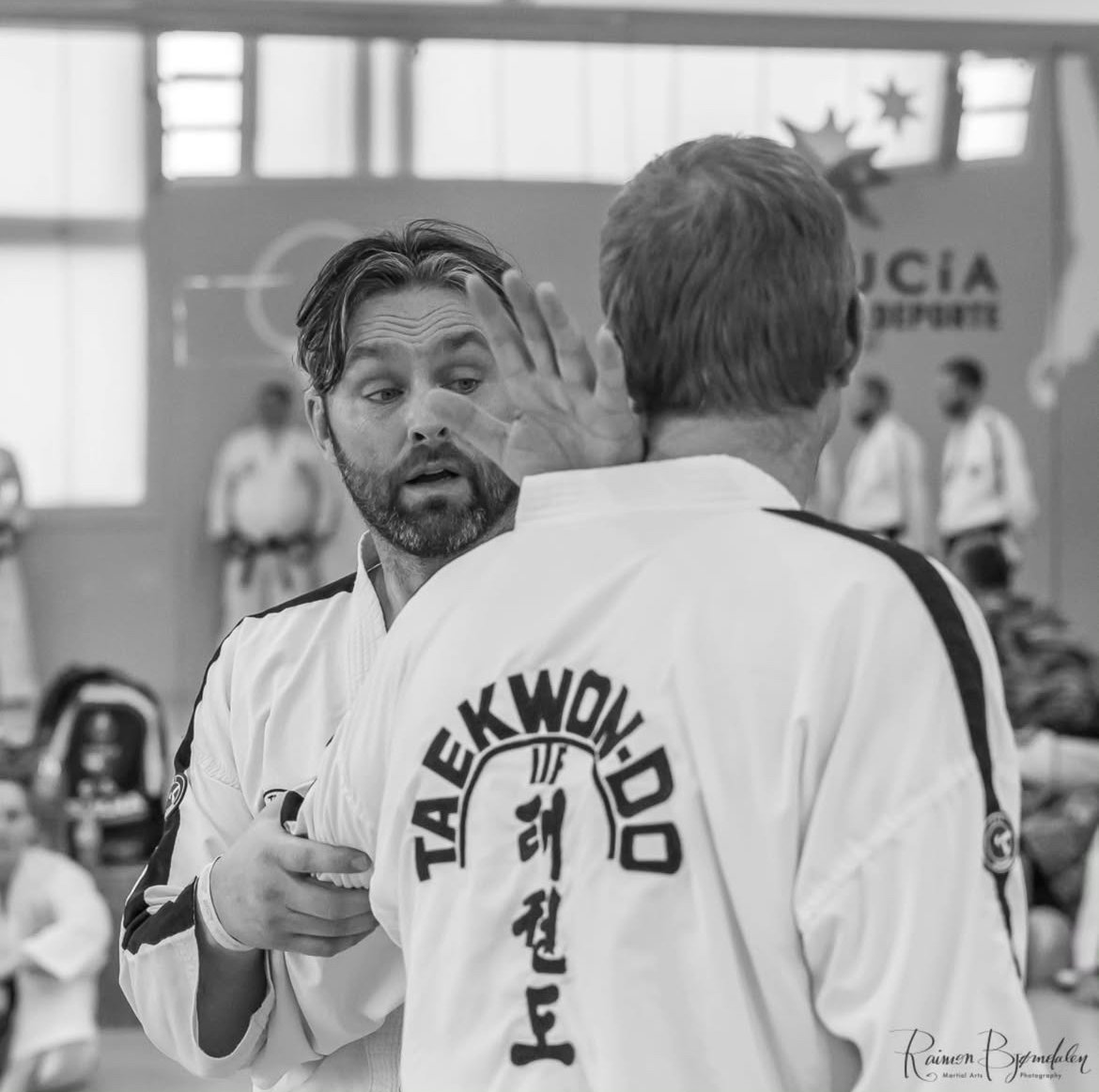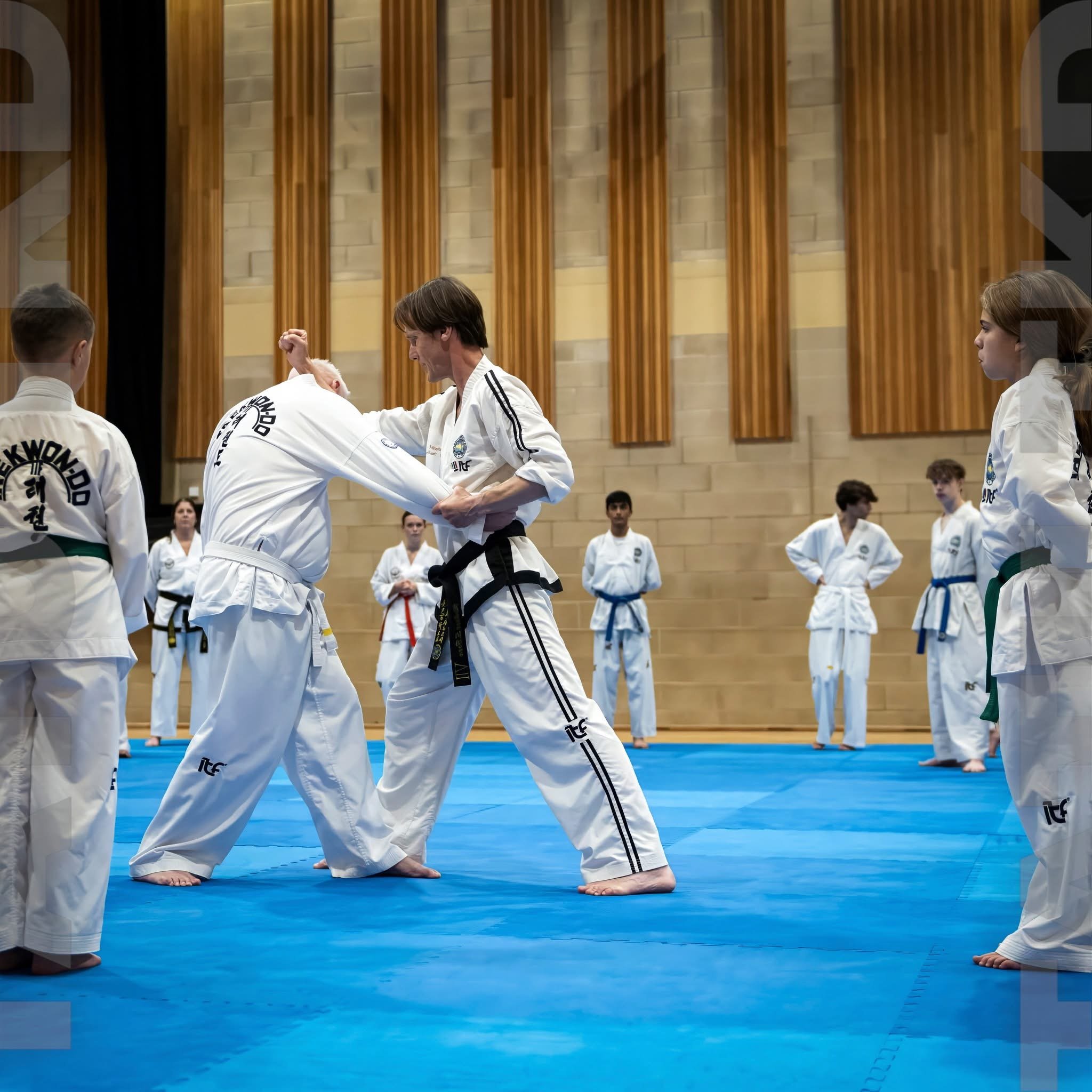The shared technical DNA of Taekwon-Do, Judo and Karate
Two Hands, One Intention: Tsurite and Hikite vs Jirugi, Terigi, Makgi and Dangison
Photo: Renee Muhina
By Roy Rolstad
Introduction
In Judo, every throw depends on two coordinated hands. One hand guides and lifts. The other pulls and breaks posture.
In Taekwon-Do, the same structure exists inside every strike and block. The finishing hand, whether jirugi, terigi or makgi, plays the role of tsurite. The hand pulled to the hip, ribs, shoulder or elbow is the Korean equivalent of hikite, called dangison.
This article gives a precise comparison between these systems and explains how these mechanics form the foundation of ITF Radix applications.
A Shared Technical DNA
My personal view is that we are looking at a common technical DNA.
Taekwon-Do grew out of karate through the Korean army and cultivated through the rivalry between ITF and WTF, in and outside of Korea. Karate literally means empty hand and grew out of southern china, cultivated in Okinawa, and modernized in Japan. Judo grew out of the jiujitsu traditions of mainland Japan. If you remove the gi from the gripping hands of Judo, the movement is karate. The technique is the same.
The main goal is to manipulate a opponent.
Seen from this perspective:
Taekwon-Do is karate.
Karate is Judo.
Judo is Taekwon-Do.
They express different aspects of the same body mechanics. They use the same physics, the same structure and the same two hand engine that drives all effective martial arts.
This shared DNA is the foundation that makes comparisons between tsurite and hikite on one side and jirurgi, terigi, makgi and dangison on the other not just interesting but inevitable.
Photo: Raimon Bjørndalen
Hikite in Judo and Dangison in Taekwon-Do
Purpose
Hikite pulls, rotates and breaks posture. Dangison does the same by jerking, twisting and exposing targets. Both load the opponent onto one foot before the finishing action.
Mechanics
Both use lat driven retraction, core rotation and backward elbow travel to collapse the attacker’s structure.
Contact Points
Hikite grips sleeves, wrists, elbows or gi cloth.
Dangison grips wrists, forearms, clothing, shoulders or the neck line.
In both systems, this hand controls the arm axis and shoulder frame.
Photo: Renee Muhina
Tsurite in Judo and Jirugi, Terigi and Makgi in Taekwon-Do
Purpose
Tsurite sets the direction of the throw by guiding, lifting or controlling the head and spine line.
In Taekwon-Do, the finishing hand, whether punching, striking or blocking, performs the same role. It determines the direction of collapse, impact or takedown and becomes the final expression of the two hand mechanism.
Mechanics
Tsurite works upward and diagonally through lift and rotation.
Jirugi, terigi and makgi work forward and diagonally through hip rotation and linear projection or structural redirection.
All finalize the effect created by the pulling hand.
Contact Points
Tsurite grips the lapel, collar or upper sleeve.
Jirugi, terigi and makgi contact with fist, forearm, knife hand, palm or elbow.
Both affect the head and shoulder axis during the finish.
The Two Hand Engine
The two hand engine is the shared mechanical principle found in both Judo and Taekwon-Do. One hand pulls and unbalances. The other hand directs and finishes the action.
In Judo, Hikite creates rotation and loss of balance, while Tsurite sets the direction of the throw.
In Taekwon-Do, Dangison creates rotation and loss of balance, while Jirugi, Terigi or Makgi set the direction of the strike, projection, redirection or takedown.
Both systems rely on pulling to collapse posture, guiding to create direction, and coordinated hip rotation to load the kinetic chain. Both use the hands to manipulate the head and shoulder line. Both depend on timing where the pulling action comes first and the finishing action follows.
The mechanics are the same even though one system finishes with throws and the other finishes with strikes or takedowns.
Timing Comparison
Judo
Hikite breaks posture
Tsurite sets the line
Body enters
The throw completes
ITF Radix application of Taekwon-Do
Dangison destabilizes
Jirugi, terigi or makgi define the line of collapse
Body turns or steps
The strike, lock or takedown completes
The timing is the same. Only the expression changes.
Why This Matters in the ITF Radix project
ITF Radix training restores the original two hand mechanics inside the patterns. Makgi becomes a steering action rather than a symbolic block. Dangison regains its function as the pulling and destabilizing hand. Jirugi and terigi express the finishing line.
This makes patterns coherent, combative and structurally connected to grappling arts. Taekwon-Do becomes a holistic complete two hand fighting system with deep roots in a shared martial DNA that runs through karate and Judo.
Final Summary
Hikite and dangison share the function of pulling and destabilizing.
Tsurite and jirugi, terigi and makgi share the function of guiding, striking, redirecting and finishing.
Both arts use a two hand engine based on coordination, direction and structural control.
Both manipulate the head and shoulder axis.
Both use one hand to create opportunity and the other to complete the effect.
The mechanics are universal.
The lineage is shared.
This is the foundation of the holistic idea of ITF Radix applications.
Photo: Renee Muhina




